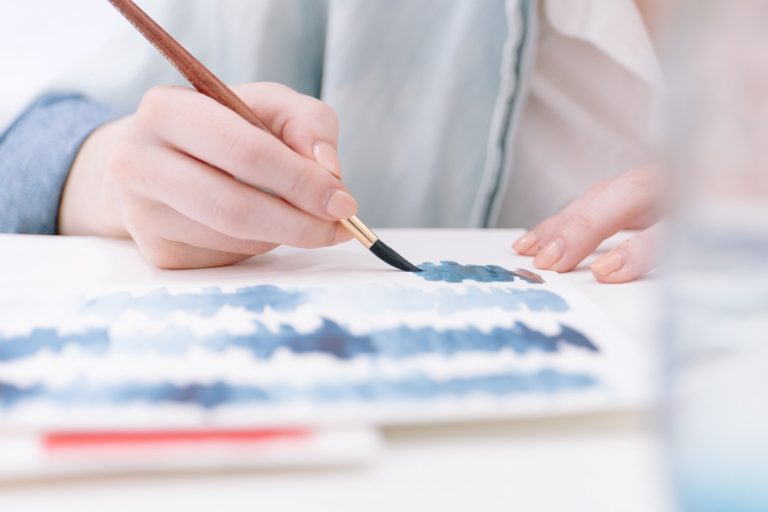
According to the QS World University Rankings for 2016, 12 out of the top 100 art and design schools in the world are located in Australia. So a country that accounts for less than 0.3 per cent of the world’s population has more than 10 percent of its leading art schools – an impressive statistic, to say the least.
With that in mind, there is no shortage of international students eager to earn an art degree Down Under. But with so many leading institutions to choose from, narrowing down the selection can be difficult. Ideally, you want to enrol at an art school that can effectively balance tradition and technique with a vision for the future of art and design.
In other words: you want an art school that can innovate.
Balancing brush skills with creative flair
As an artist, the ability to innovate grows out of a strong foundation in the tools and techniques of the artist. Students must master the guiding principles of their chosen art form before they venture to bend or reinterpret them.

Image courtesy of Queensland College of Art
You’ll find that many leading institutes of the arts are able to deliver these three essential factors:
- Renowned instructors – Students of the arts are understandably eager to learn under master practitioners, ensuring that they’ll be able to develop the skills needed to flourish as an artist.
- World-class facilities – The best art schools feature cutting-edge studios in which students can master the latest techniques and artistic approaches.
- Artists’ community – By its very nature, an art education spills out of the classroom and into the local community; that’s why many leading art schools find themselves at the centre of a vibrant hub of the arts and culture.
With a strong foundation in their art form, students gradually learn to take risks and develop their own voice. Artistic innovation is sure to follow.
Exploring ancient art forms in a modern context
One powerful way that Australian art schools are innovating is by reinterpreting ancient art forms for a modern audience. And given the legacy of art created by Australia’s indigenous people, this is an exciting field of study for art students.
Scientists have recently sequenced the first Aboriginal genome. This has confirmed what many anthropologists already suspected – that Australia’s native people represent the oldest living culture on Earth. And this ancient culture offers us a window into some of the oldest art forms that humanity has ever practiced.

Image via Unsplash
As former Prime Minister, Kevin Rudd, once said:
“We are so fortunate, as Australians, to have among us the oldest continuing cultures in human history. Cultures that link our nation with deepest antiquity. We have Aboriginal rock art in the Kimberley that is as ancient as the great Palaeolithic cave paintings at Altamira and Lascaux in Europe.”
Some of the top art schools in Australia are helping students explore these ancient art forms in a contemporary context. Students learn under Indigenous lecturers and are trained to create artistic elements in accordance with Aboriginal principles. The art they produce is intensely modern, and guided by an ancient artistic philosophy. It’s the portrait of innovation.
Read on to learn more about a few of the country’s most innovative art schools:
QUEENSLAND COLLEGE OF ART, GRIFFITH UNIVERSITY
It may be one of Australia’s longest-running art and design colleges, but the Queensland College of Art (QCA) has its gaze firmly on the future. This is an ultra-modern institution with world-class facilities and a penchant for pushing boundaries in the creative and visual arts. The QS World University Rankings list QCA as one of the top universities in the world for art and design.
QCA operates two campuses – one at South Bank in the heart of Brisbane’s cultural precinct, and the other at Gold Coast. At both locations, the art school partners with local community organisations, government institutions and businesses to arrange projects for students. A full range of undergraduate, postgraduate and research degrees are available in everything from design futures and art theory to games design and animation.
MELBOURNE SCHOOL OF DESIGN, UNIVERSITY OF MELBOURNE
Located at the University of Melbourne, the Melbourne School of Design is part of the university’s Faculty of Architecture, Building and Planning. This faculty offered one of Australia’s first bachelor degrees in architecture back in 1927. Today, they offer courses for a wide spectrum of built environment professionals.

Image courtesy of Melbourne School of Design
The school fosters a lively spirit of exploration both in classrooms and the various design studios. Cultural diversity is a strong selling point for the Melbourne School of design. The student body and staff represent more than 50 different countries, and alumni form a strong global network that graduates can leverage after earning their qualifications.
SCHOOL OF DESIGN, CURTIN UNIVERSITY
Curtin University is the largest university in Western Australia (WA), with a total of 53,000 students enrolled; its university campus is also the most diverse in the state. With that in mind, there is plenty of competition for course placements – especially at the undergraduate level – with 45 per cent of undergraduates in WA indicating Curtin as their top choice.
The coursework offered by the School of Design and Art encourages artists and designers to find their voice. It accomplishes this by first helping them to develop the skills required to communicate their artistic vision, before channelling this into evocative visual language.

Image via Unsplash
THE NATIONAL ART SCHOOL (NAS)
NAS is one of Australia’s leading visual arts institutions, with roots going back to 1873. In nearly a century and a half of operation, this prestigious art school has developed a rich tradition of artistic practice and has produced several generations of world-renowned artists.
This is a practitioner’s art school, which means that the instructors are committed to helping their students hone and develop the skills needed to master their artistic medium. The staff comprises many practicing artists who provide intensive instruction in state-of-the-art studios. The full-time programmes offered at NAS include a Bachelor of Fine Art and a Master of Fine Art. In addition to this, part-time and intensive short courses are made available to the local community.
*Some of the institutions participating in this story are commercial partners of Study International
Feature image via Unsplash
Liked this? Then you’ll love these…
Colleges that change lives – the value of a Liberal Arts degree
Top music schools which offer a clear route to the heart of the industry
| Top music schools which offer a clear route to the heart of the industry |







